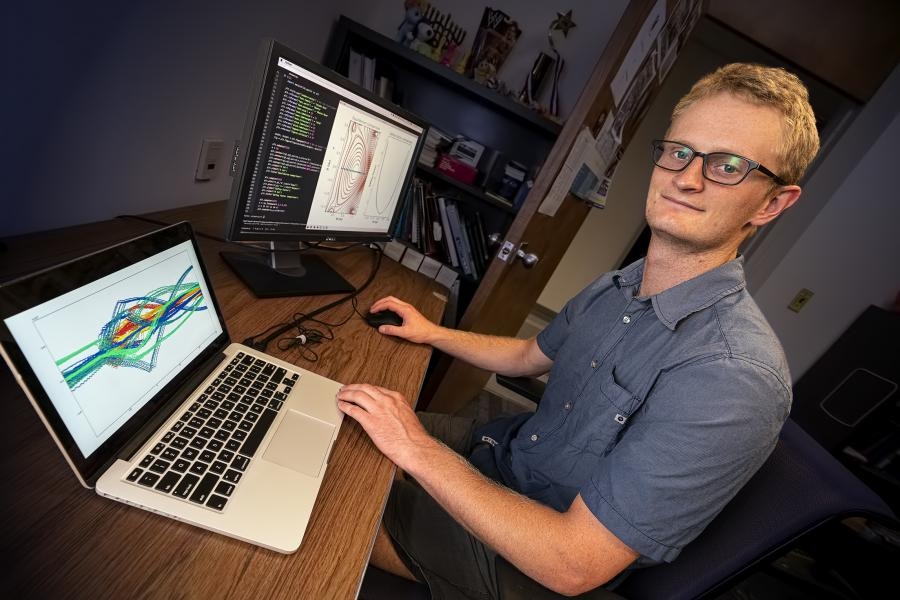Jul 11 2019
Researchers looking to achieve on Earth the fusion that powers stars and the sun must be able to regulate the hot, charged plasma that fuels fusion reactions. Plasma is the state of matter formed by free-floating electrons and atomic nuclei, or ions.
 Physicist Andrew “Oak” Nelson. (Image credit: Photo by Elle Starkman/Office of Communications)
Physicist Andrew “Oak” Nelson. (Image credit: Photo by Elle Starkman/Office of Communications)
Scientists who restrict the plasma in magnetic fields encounter the important task of mapping the shape of the fields, a process called measuring the equilibrium, or stability, of the plasma. Researchers from the U.S. Department of Energy’s (DOE) Princeton Plasma Physics Laboratory (PPPL) have come up with a new measurement method to eliminate challenges associated with the mapping of the fields on robust and large future tokamaks, or magnetic fusion devices, housing the reactions.
Neutron Bombardments
Tokamaks such as these, which include ITER, the large international experiment being built in France, will generate neutron bombardments that could impair the interior diagnostics currently used to map the fields in existing facilities. Hence, PPPL is intending to use an alternative diagnostic system with the ability to function in high-neutron environments.
The system, which is a kind of plasma diagnostic known as “Electron Cyclotron Emission (ECE),” evaluates the temperature of the electrons that cycle around the field lines.
By using an ECE system, we can learn about the plasma temperature and about fluctuations in the plasma. This proposed method could be developed into a stand-alone mapping tool or used with existing tools.
Andrew “Oak” Nelson, Graduate Student in Plasma Physics, PPPL
Nelson is also the first author of a Plasma Physics and Controlled Fusion paper describing the study.
The technique involves combining ECE data with a fast-camera image employed to measure the plasma’s boundary. The study reports that the combination offers “diagnostics which can be robustly designed in high-neutron environments.” The process works as follows:
- Researchers observe the radiation emitted by the cycling electrons.
- The radiation offers data related to the temperature and modes, or instabilities, that develop in the plasma.
- The data enable the measurement of the “q-profile,” which is the spiraling or helicity of the magnetic field.
- Helicity measurement allows the tokamak operators to map and regulate the plasma’s equilibrium.
Reversing a Process
This method, tested by the researchers on a simulated discharge of the National Spherical Torus Experiment (NSTX) at PPPL before it was upgraded, cancels a process often used in fusion research. “People usually get the q-profile from the equilibrium,” said Nelson, “but our paper shows that you can also get the equilibrium from knowing the q-profile.”
Egemen Kolemen, a PPPL physicist and an assistant professor at Princeton University’s Department of Mechanical and Aerospace Engineering worked closely with Nelson and was his advisor.
Oak is an extremely talented student. The method he developed allows construction of the state of the fusion plasma using only a single diagnostic, ECE. This will be useful for many tokamaks including ITER, because combining many different diagnostics is problematic and error prone.
Egemen Kolemen, Physicist, PPPL
At present, researchers intend to test the ECE method on an extensive range of plasma discharges. A fully developed and established method could offer a useful system for mapping the critical magnetic fields in ITER and next-generation tokamaks.
This study was supported by the DOE Office of Science. Max Austin from the University of Texas at Austin was one of the coauthors of the study.